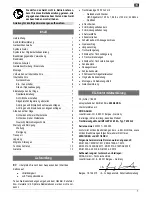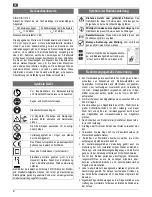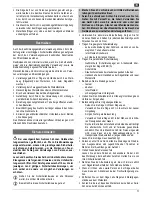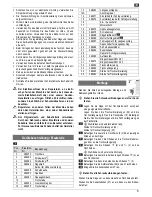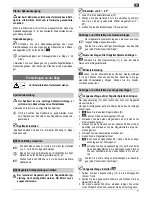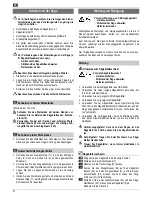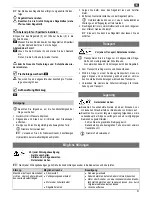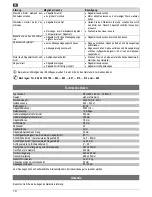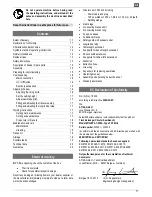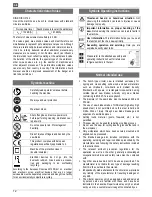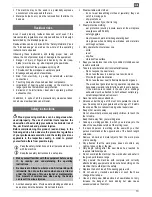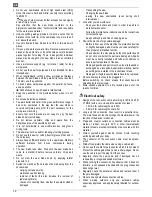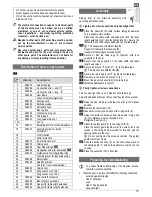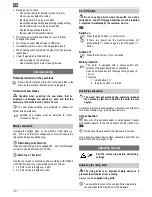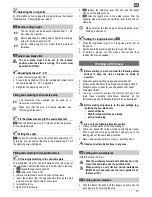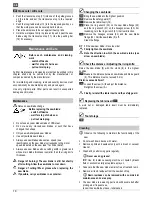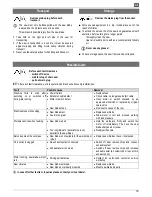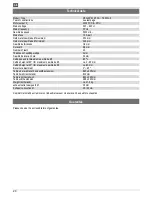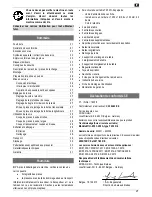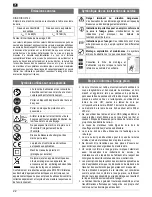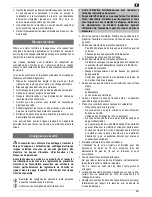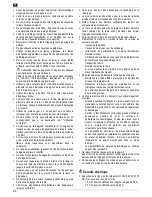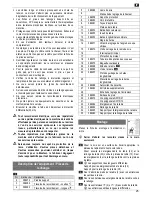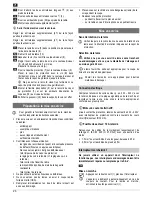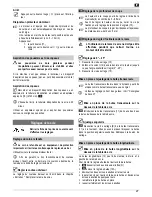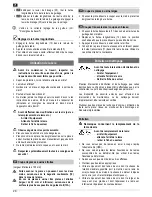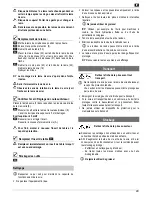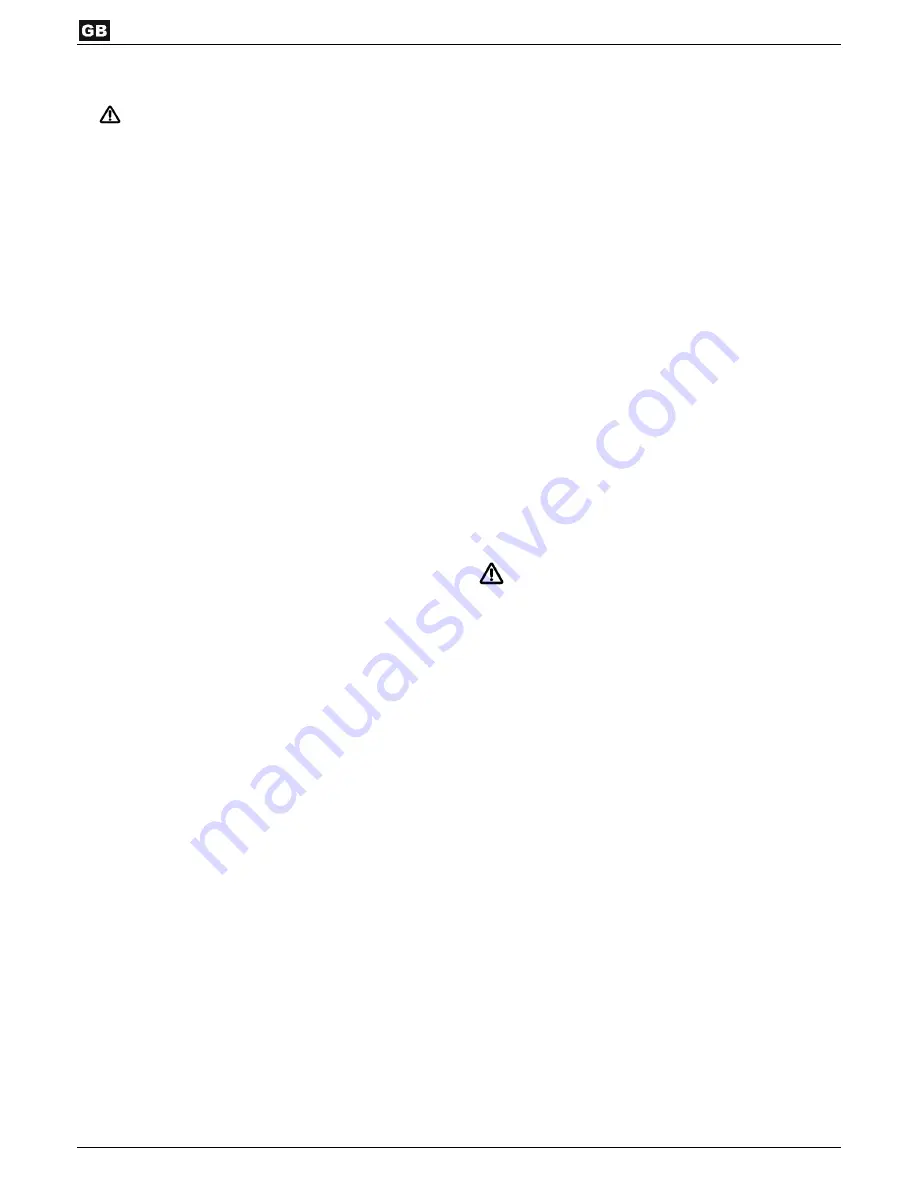
14
Do not use saw blades made of high speed steel (HSS)
since this steel is hard and brittle; use only tools according
to EN 847-1.
The use of other tools and other accessories can signify
a risk of injury for you.
Pay attention that the saw blade conforms to the
dimensions specified under "Technical Data" and is suitable
for the work piece material.
Use the splitting wedge provided. It must be set so that its
distance to the tooth rim of the saw blade is no more than 5
mm above the bench.
Use only fine-tooth saw blades to cut thin or thin-wall work
pieces.
Only saw one work piece at a time. Never saw several work
pieces at the same time or do not bundle several individual
pieces together for cutting. There is danger that individual
pieces may be caught by the saw blade in an uncontrolled
manner.
Use a workpiece support (e.g. roll stand / table) for long
workpieces.
Do not use the saw for purposes it is not intended for (see
intended use).
When longitudinally cutting narrow workpieces (distance
between the saw blade and the parallel rip fence less than
120 mm), use the pushstick.
To push narrow workpieces against the parallel rip fence,
use a pushstick.
Î
Pushsticks can be purchased in retail outlets.
Keep the pushstick in the provided holder when it is not
used.
Do not use defective pushsticks.
You work better and safer in the given performance range. It
has to be positioned in the way that the saw blade is
covered completely except for the part necessary for the
work piece machining.
Ensure that cut off pieces are not caught up by the saw
blade and projected away.
Do not remove splinters, chips and waste from the
hazardous area of the saw blade by hand.
It is not permissible to use wobble devices and groove
milling tools.
This saw may not be used for rebating or cutting grooves.
Do not use this saw for cutting inserts (grooves that end in
the workpiece).
Always keep sufficient distance to the saw blade. Maintain
sufficient distance from driven components during
operation.
The saw blade runs after. Wait until the saw blade has
come to a standstill before remove splinters, chips and
waste.
Do not slow the saw blade down by applying lateral
pressure to it.
Switch the machine off and remove the mains plug from the
socket when
−
carrying out repair works
−
maintenance and cleaning
−
removal of faults (this also includes the removal of
jammed splinters)
−
checks of connecting lines, whether these are knotted or
damaged
−
Transporting the saw
−
Changing the saw blade
−
leaving the saw unattended (even during short
interruptions)
Look after your saw with care:
−
Keep your tools sharp and clean in order to be able to
work better and safer.
−
Follow the maintenance instructions and the instructions
for tool exchange.
−
Keep handles dry and free of oil and grease.
Check the machine for possible damage:
−
Before further use of the machine the protection devices
or slightly damaged parts must be checked carefully for
their proper and intended function.
−
Check whether the movable parts function perfectly and
do not stick or whether the parts are damaged. All parts
must be correctly installed and fulfil all conditions to
ensure perfect operation of the saw
−
Damaged guards and parts must be properly repaired or
exchanged by a recognized, specialist workshop; insofar
as nothing else is stated in the instructions for use.
−
Damaged or illegible security labels have to be replaced.
Do not allow any tool key to be plugged in!
Before switching on, check always that wrenches and
adjusting tools are removed.
Store unused equipment in a dry, locked place out of the
reach of children.
Electrical safety
Design of the connection cable according to IEC 60 245 (H
07 RN-F) with a core cross-profile section of at least
−
1.5 mm2 for cable lengths up to 25m
−
2.5 mm2 for cable lengths over 25m
Long and thin connection lines result in a potential drop.
The motor does not reach any longer its maximal power; the
function of the device is reduced.
Plugs and coupler outlets on connection cables must be
made of rubber, non-rigid PVC or other thermoplastic
material of same mechanical stability or be covered with this
material.
Protect yourself against electric shocks. Avoid touching
earthed parts with your body.
The connector of the connection cable must be splash-
proof.
Wind off completely the cable when using a cable drum.
Do not use the cable for purposes for which it is not meant.
Protect the cable against heat, oil and sharp edges. Do not
use the cable to pull the plug from the socket.
Regularly check the saw cable and if damaged, have it
renewed by a recognised skilled electrician.
When running the connection line observe that it does not
interfere, is not squeezed, bended and the plug connection
does not get wet.
Regularly check the extension cables and replace them if
they are damaged.
Do not use any defective connection cables.
When working outdoors, only use extension cables
especially approved and appropriately labelled for outdoor
use.


